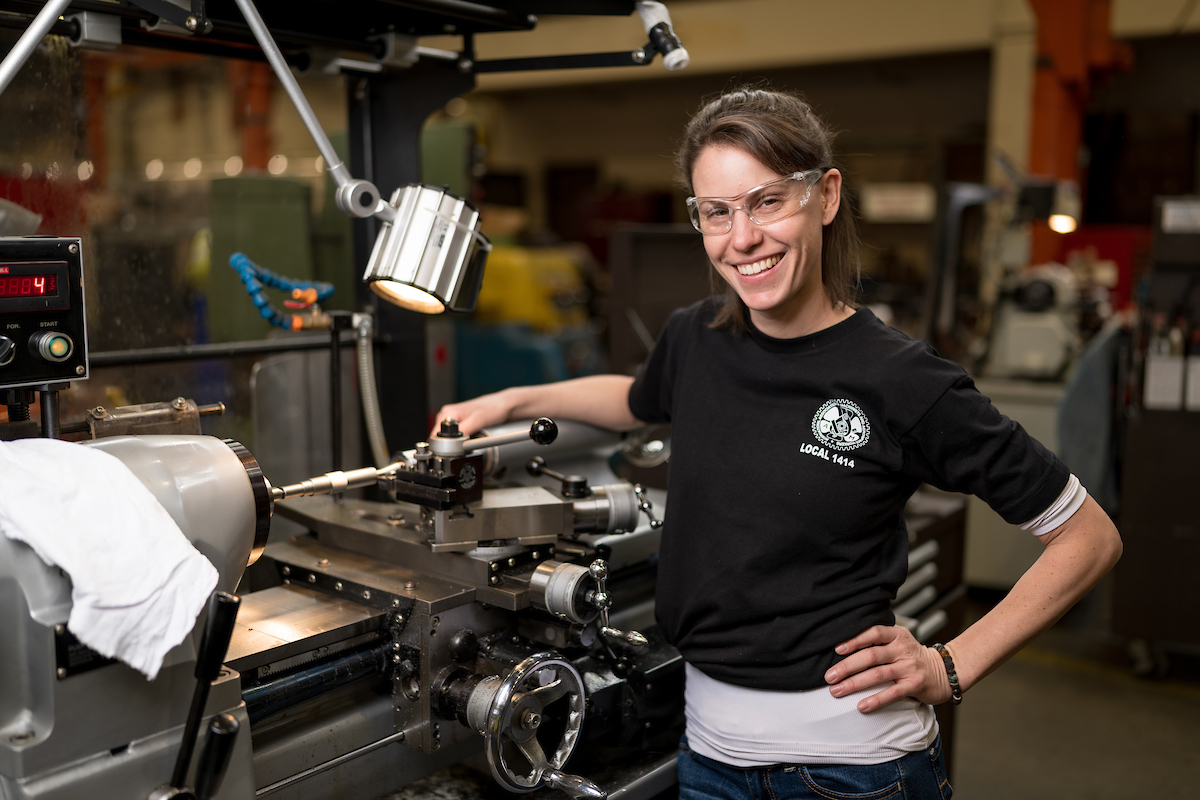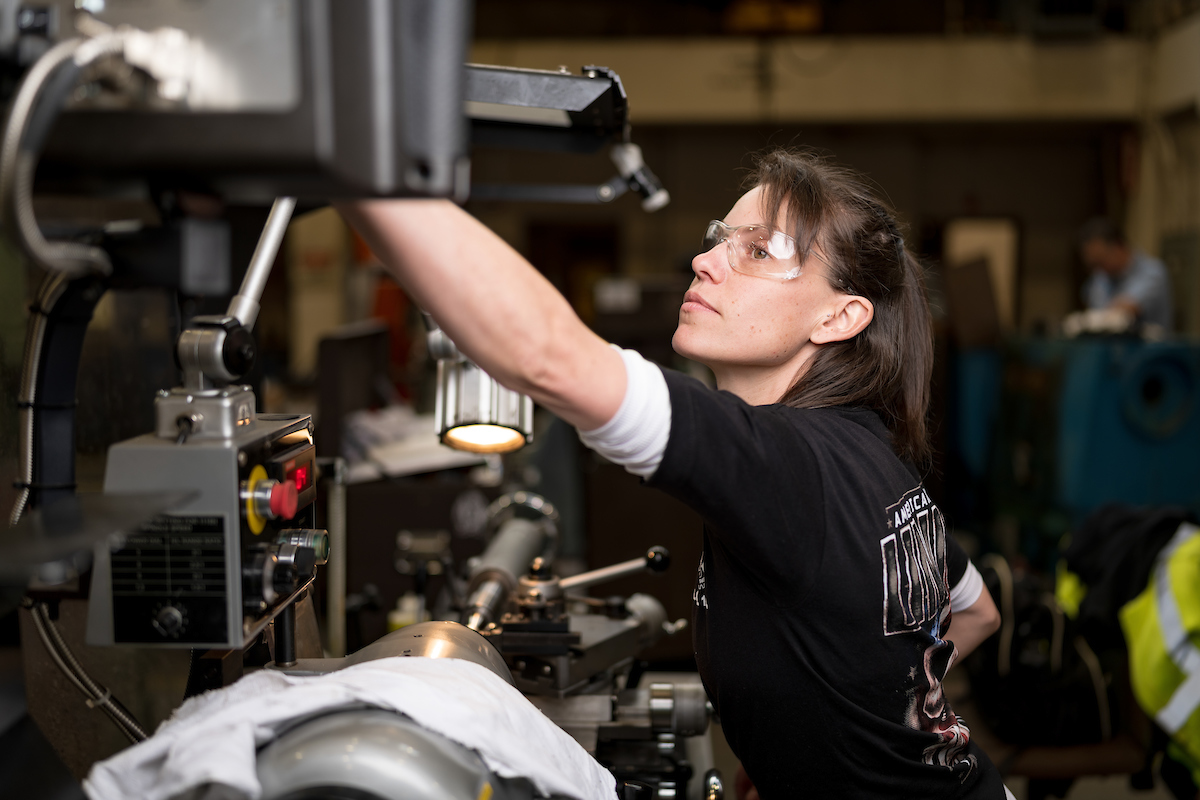 Brittany McMartin uses a precision lathe to create a fastener at the SFMTA.
Brittany McMartin uses a precision lathe to create a fastener at the SFMTA.
Machinist Apprentice -- Meet Brittany McMartin
Brittany McMartin is an apprentice machinist who works on historic streetcars and cable cars at the SFMTA. Learn how a welding course inspired her to become a machinist, the key skills she applies in her role and what her workdays look like. Find out what she enjoys most about her job.
Check out the video at the end of this story to learn more about McMartin's work!
Coursework and jobs before current role:
Brittany’s story:
“I was intimidated by the idea of a traditional college like the ones my siblings went to, because I’m a visual and kinesthetic learner,” McMartin said. “I don’t learn through audio, so lectures never worked for me.”
“When I started taking a basic welding class at Laney College, I did have some classroom instruction. But then I was able to get in a welding booth and figure stuff out myself. That really worked for me!”
The class inspired McMartin to learn even more skills through Laney’s Industrial Maintenance Program. In one course, McMartin heard about machinist opportunities at the SFMTA. She applied after working as a welder at an aerospace company.
Coursework: Industrial Maintenance Program at Laney College
Previous jobs:
-
Welder at an aerospace corporation doing cosmetic welds
-
Machinist helper at the SFMTA’s cable car machine shop
Resources:
 With the proper technique and setup, McMartin can control her precision lathe cut within .001 of an inch.
With the proper technique and setup, McMartin can control her precision lathe cut within .001 of an inch.
Key skills required for current role:
As an apprentice machinist, McMartin works on cable cars and historic streetcars.
Here are the key skills she says are most important for the job:
-
Create a gameplan for your project and the best setup for materials
“Being a machinist, your setup is the most important part of your job. Before you cut, you have to map out the project. You need to know how you’re going to go from point A to point B. You have to figure out what tools you need. Sometimes, you might need to make a tool first. So, it can be one step forward, two steps back. That’s taught me to take a deep breath and have patience.”
-
Know how to use a range of materials and tools
“We need a basic understanding of different types of material. Sometimes, we use a heat-treated material. With other projects, we’ll use aluminum. That’s a very soft material. These are both going to act very differently.”
-
Understand basic measurements
“I follow that golden rule – measure twice, cut once. Working with a ruler wasn’t a strength I had in the past. So, I work carefully to always make sure I’m going from the right measurements."
-
Take a break when necessary
“When you get frustrated on a project and just can’t see what's next, sometimes that’s the best thing. That’s when you put it down and go for a walk, drink some water or ask for help. Especially as an apprentice, it’s important to speak up when you tried but still don’t understand something.”
What a typical workday looks like:
-
Reverse engineering parts
“Many parts for the cable cars and street cars aren’t manufactured anymore. So, we make them through reverse engineering. We take measurements, draw a sketch and make an identical part. We’ll find a piece of stock metal that’s oversized, cut it to correct length and map out which machine is best to complete the job.”
-
Building skills with mentors
“As an apprentice, I’m assigned jobs that are within my skill set. But I also get things that are out of my skill set. In these cases, I'm paired up with somebody. I get to watch them solve a problem and chime in when I can bring something to the table. Over time, I’ve observed who can really cater to my learning style. I seek them out to learn new things because I can absorb so much knowledge that way."
What she likes most about her job:
-
Taking mistakes in stride
“I’ve learned a lot about myself by making mistakes and working through them in this job. I’m really good now at regulating my emotions. When I get frustrated, I understand it’s okay to mess up – that it's part of learning. Now, I can apply this to all kinds of areas in my life.”
-
Building confidence in a supportive setting
“As the only girl in the machine shop, I feel like I’ve built a whole new level of confidence in myself. I now feel that I’m a capable person who can figure things out – and also ask for help when I need it.”